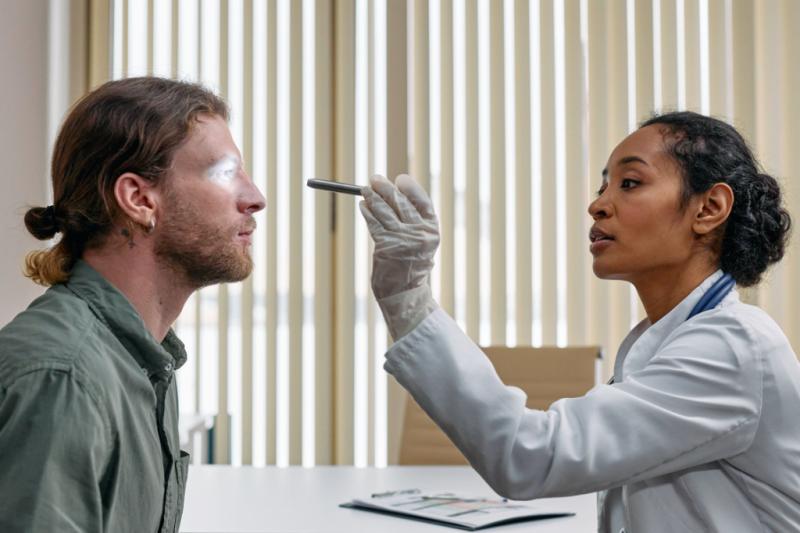Guest Post: How to Prepare for LASIK Surgery

LASIK stands for laser in-situ keratomileusis. This remarkable procedure helps patients achieve 20/20 vision or close to it, often enabling them to return to normal activities without needing glasses within days. If you’re considering LASIK surgery, you may wonder what the preparation entails. While each eye surgeon may have slightly different instructions, here’s how most patients get ready for LASIK surgery.
What to Expect During a LASIK Consultation
Before the surgery, you’ll visit your eye doctor’s office for a LASIK consultation. Here’s what may happen during this appointment.
Discussion of Medical History
Your surgeon must know some basics about your eye health and medical history to ensure you’re a good candidate for LASIK surgery. It will be helpful to bring along any records from previous eye doctors, including your current prescription and information about any pre-existing eye conditions. You may also want to bring notes about recent surgical procedures or existing medical conditions you’re experiencing. Providing accurate, up-to-date information will help your surgeon make an informed decision and ensure the best possible surgical outcomes.
Eye Exam
Next, the eye doctor will perform a comprehensive eye exam. LASIK is often recommended for patients whose eyes haven’t experienced any recent prescription changes. Ideally, the exam findings will show that your vision hasn’t changed within the last two years, which will help qualify you for LASIK.
The doctor will perform some tests to check your vision and eye health. You’ll likely have a general vision test using an eye chart. You may also receive eye drops to dilate the pupils, allowing the doctor to see the eye’s internal structures and precisely measure the refractive error that the procedure will correct. The doctor may also use machines to take digital images of your eye and inspect your eyelids and tear films for any signs of issues.
As part of your LASIK consultation, the eye exam will also encompass a particular procedure called corneal mapping. Also known as corneal topography, this process maps the eye’s surface to inform the laser programming that will take place during the LASIK procedure.
Questions & Procedure Overview
Following your exam, the eye surgeon will explain in detail what will occur during LASIK surgery. They’ll provide detailed information about preparing, including when to stop wearing contacts and taking any medications that could affect the procedure. They’ll also explain what the process entails, what to bring on the day of the procedure, and the steps for aftercare. Be sure to ask any questions during the consultation to feel prepared leading up to your surgery.
Lifestyle Changes
Your eye doctor will advise you to make specific changes leading up to your procedure to ensure the best possible surgical outcomes. For example, they may direct you to:
- Stop wearing soft contact lenses for one to two weeks before the procedure or hard lenses for three to four weeks. Contacts can alter the shape of your cornea, so discontinuing use before the surgery will allow the surgeon to make precise assessments of the eye shape.
- Take at least one day off work to allow 24 hours or more for your eyes to heal.
- Request help from loved ones. You’ll need someone to drive you home from LASIK surgery, and you may also find it helpful to have someone at home to assist with tasks.
- Stay hydrated. Keeping your eyes hydrated will facilitate proper healing, so avoid alcohol, smoking, and caffeine before the procedure, as they can have drying effects.
- Stop certain medications. Some migraine, acne, and antihistamine medications can affect wound healing or eye dryness and may therefore need to be stopped before surgery.
You will also need to coordinate transportation with a friend or family member since your eyes will be dilated after both the consultation and the procedure.
The Day of LASIK Surgery
LASIK is performed under local anesthesia and is typically done at a surgery center or the ophthalmologist’s office. The office may instruct you to arrive early to complete the paperwork and prepare for the procedure.
To remain comfortable during and after the procedure, wear casual, loose-fitting clothing that you don’t need to pull over your head. Avoid any hair accessories that could affect proper head placement. You’ll also want to avoid any products that could allow debris or chemicals to enter your eyes, such as makeup, lotion and cream, eye makeup, and clothing with loose fibers. Typically, patients do not need to fast or avoid fluids before LASIK. You’ll likely be instructed to have a light meal, but remember to avoid caffeine and alcohol.
Be sure to bring your glasses if you need them to see before the appointment and any necessary payment and insurance information. While the procedure may take 20 to 30 minutes, you may be in the office for an hour or slightly longer when factoring in prep time.
Remember that you will need someone to drive you home after the procedure. You may be ready to drive the next day, but nighttime driving can take up to a week to feel normal again.
More to Read:
Previous Posts:








